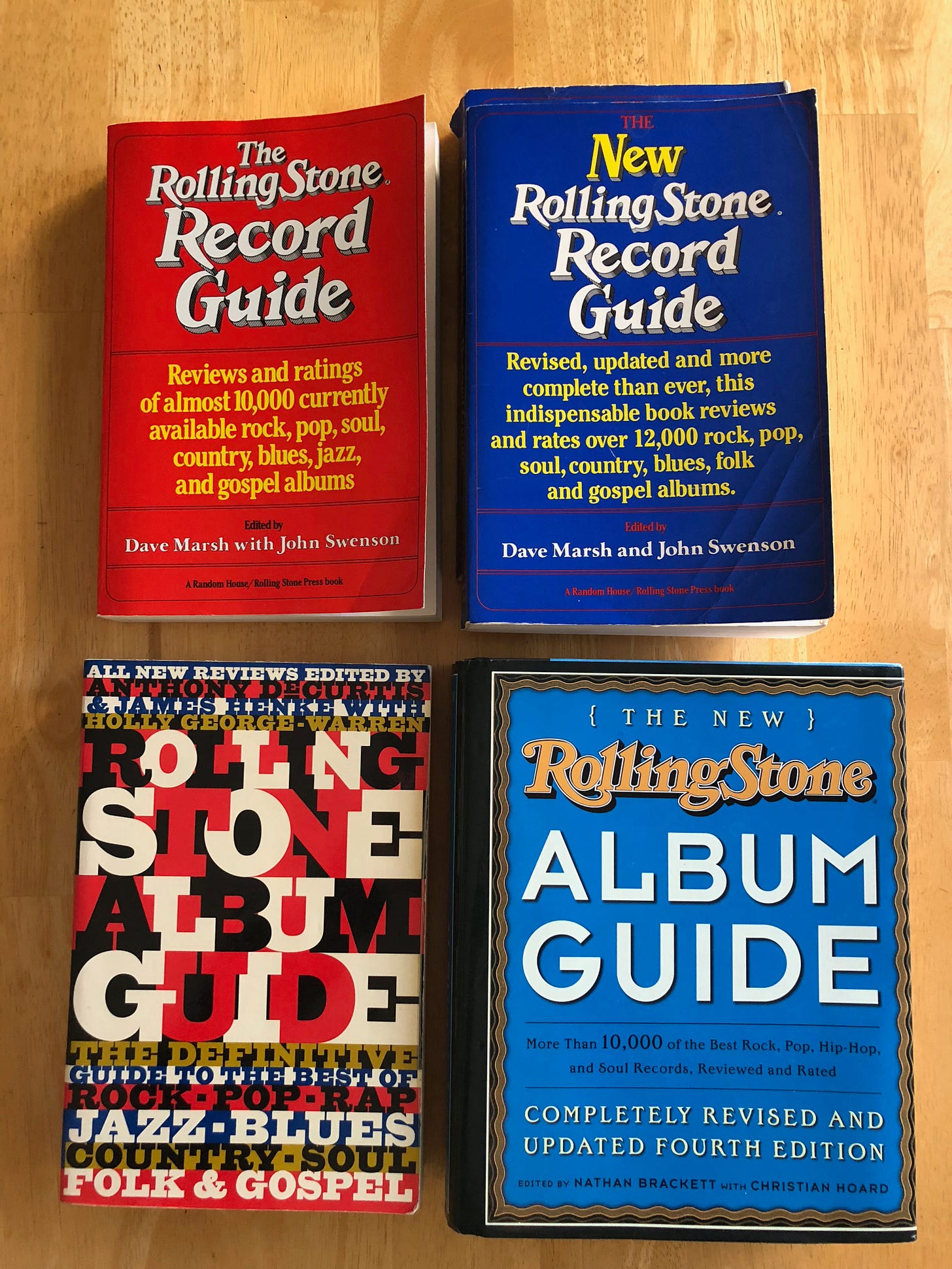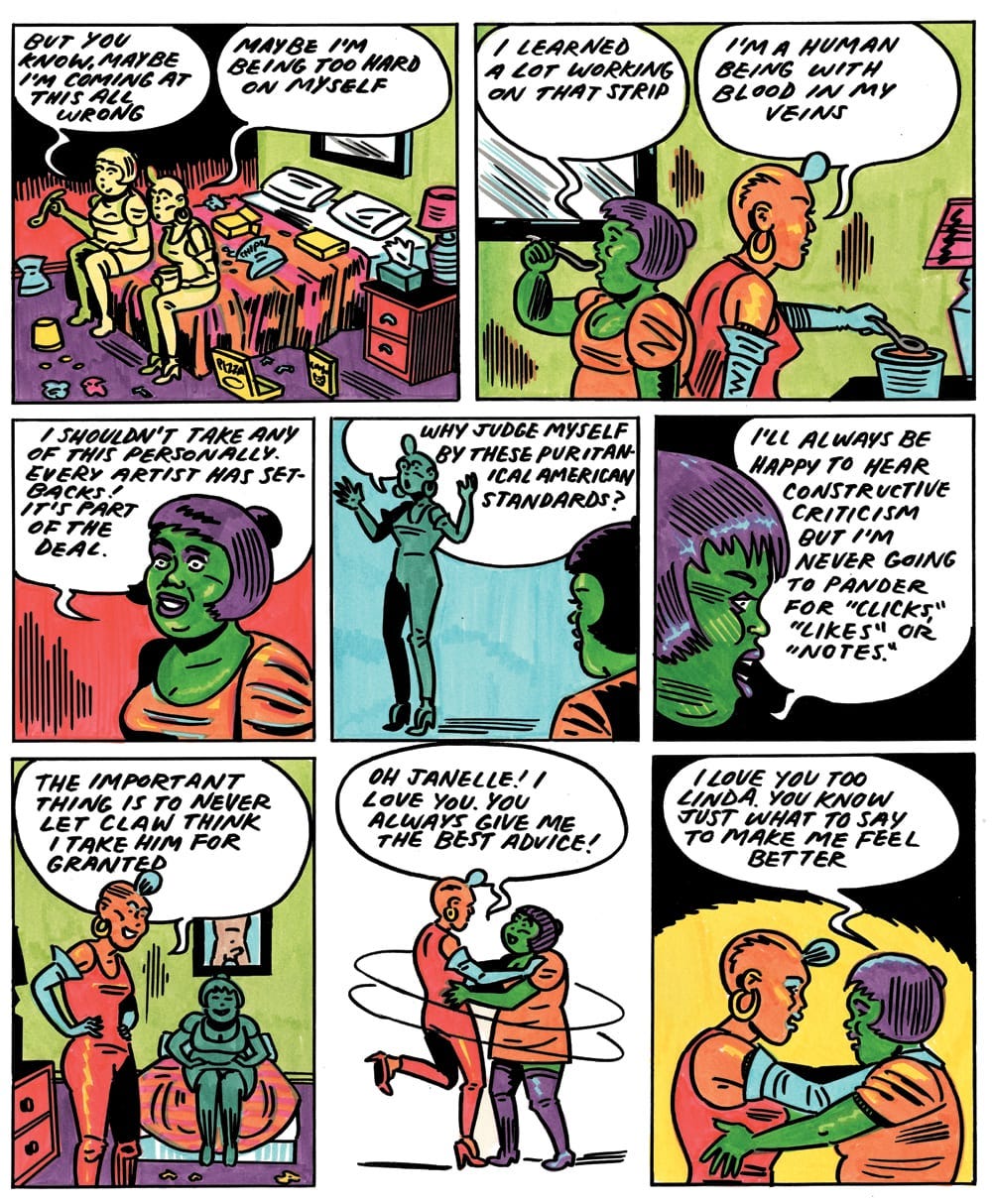STRUCK CHORDS FROM SOUND HOARDS (Vol. 6, No. 329)
Aamer Rahman, The Rolling Stone Record Guide, Anya Davidson, Sheldon Kopp, Annie Achron, Harry Nilsson, Jeff Parker, Denny Dias, Azita, Chic-a-Go-Go, Don Cherry, Don Bolles, John Cage, Prince
I can only think of three basic editorial restrictions I hold myself to when writing for Blastitude, and one of them is no politics; even in these frankly revolutionary times, I like to focus on music (which I think naturally overlaps with and comments on politics in many ways already). The other two are no RIPs and no punching down, if you’re curious, although I do break all three rules on occasion, maybe the latter more than I realize. (I know I used to; if I’m still doing it, I hope I get called out.) Today I’m breaking the no politics rule (and a de facto no standup comedy rule as well, come to think of it) because I absolutely have to share this clip from standup comedian Aamer Rahman, who I’d never heard of until today when some Instagram Live algorithm put him after Thurston’s post of “Racist Sexist Boy” by the Linda Lindas, and there he was, literally explaining racism with this truly masterful routine. Seriously, if you ever find yourself embroiled in a ‘complicated’ debate about how ‘complicated’ matters of race are, simply take the two-and-a-half-minute monologue embedded above and apply accordingly.
+++++++++++++++++++++++++++++++++++++
In other news, I’ve finally landed on the precise language to explicate the 5-star rating scale for record albums, as immortalized in the oft-infuriating but grudgingly essential Rolling Stone Record Guide (particularly the 1979 ‘red’ & 1983 ‘blue’ editions). I have to give a lot of credit for this explication to Matt Korvette, who used the phrase “one of the many unremarkably-good hardcore-punk acts of today” on his YellowGreenRed reviews page back in 2019 (Cntl-F here). I loved that phrase “unremarkably good” to describe records/bands so much that I was still thinking about it today while doing the dishes, and realizing that it could be the very fulcrum of what the 5-star rating system is trying to say, with “unremarkably good” as a perfect definition of the three-star album. You might not hate it if it’s on, but it ain’t really worth your hard-earned dollar; it’s good for what it is, but there are better (four-and-five-star) examples of the same style already out there; etc. So, expanding from there in both directions:
***** Truly great
**** Remarkably good
*** Unremarkably good
** Unremarkably bad
* Remarkably bad
ZERO STARS Truly awful
I will now proceed to never actually use this rating system in my record reviews, but know this: for a record to even make it on a Blastitude “Recent Listening” page, it’s probably somewhere in the three to four star range, let’s say 3.5 to 4.8. I think the days where I even bother writing about records that are three stars or less are over. Even five star reviews are pretty intermittent, and almost always records that are at least 20 years old and have slowly risen, through time and growing context, from remarkably good to truly great. (It’s possible that all truly great records must maintain “remarkably good” four-star status for at least 20 years before they can be safely determined “truly great” five-star records.) The White Light/White Heat review in this newsletter from just over a year ago is an example of a five-star record review; I’m usually only writing about them because of something specific that a relisten has stirred up. (And sure enough, all the other records discussed on that page look well in the 3.5 to 4.8 range to me.)
++++++++++++++++++++++++++++++++++++
Digging this 2016 Comics Journal interview with comics artist, noise rock vocalist, college professor, podcast host, and surely much more Anya Davidson, conducted on the occasion of the publication of her book Band for Life. I love that book, and I love her recommendation in this interview of the 1975 book No Hidden Meanings by Sheldon Kopp, which I hadn’t heard of, and am now very intrigued by, and want a copy of. Even though its short text is very easily readable online, actual copies of the book appear to be out-of-print and expensive.
+++++++++++++++++++++++++++++++++++++++++
I should probably do a more specific music post now, and wow this Annie Achron tape from March 2021 with the long and sibilant name Silver-Handed in Subterranea, on the Silvox label, is some excellent (remarkably so!) brand new slightly-dark industrial-synth dream-pop/dream-punk. Picks to click: “A+ Disintegration” and “Nothing To-Day Kind Sir.”
++++++++++++++++++++++++++++++++++++++++++++++++++++++
I have this copy of Son of Schmilsson by Harry Nilsson in a generic sleeve that I paid 49 cents for once somewhere, and, to be honest, I think it’s a bad album. Admittedly, I’m not quite finished with side one (in fact I’m only on track three, “Joy,” which is really annoyingly bad; what a lugubrious album this is), but I already dislike this album so much that I’m actually hoping I don’t like any of the remaining eight songs on here, so I never have to listen to it again. Okay, track four “Turn on Your Radio” sounds like a nice piano/power-pop standalone, the kind of thing I figure Nilsson heads are all about. Much less stupid than something like “Joy,” but that’s in surprisingly short supply on this highly overrated (?) 1972 release. I kept thinking he was going to say something coarse and vulgar in verse three of “Turn on Your Radio,” like he does right at the beginning of the next song “You’re Breakin’ My Heart,” just in case the song ended up being actually likable, but luckily he didn’t, and likable it remained. Still don’t plan to listen to the album again.
*************************************************************
I know I’ve raved about “Miss Tony” by Azita before, but I don’t think I’ve specifically appreciated how Jeff Parker goes full Denny Dias on the second guitar solo (at the 2:15 mark). So Diasian, I bet JP changed into denim overalls before that take… YouTube algorithm sent me to Azita’s “In the Vicinity” next, same album, also a really good song with more great guitar from Parker (more Parkerian than Diasian this time, and actually the 2nd “Miss Tony” solo was plenty Parkerian too, I’m just playin’ about the overalls). BTW, the all-time classic Azita clip embedded above is from Chicago’s legendary greatest-thing-ever, the public access dance show for all ages Chic-a-Go-Go. Plenty more classic clips where this one came from!
*************************************************************
Two different quotes by two different Dons that I’ve come across this weekend, and I find them to be related: first, Don Cherry, talking about silence, as quoted on page 146 of the monumental Organic Music Societies book published by Blank Forms:
“Within that silence, it’s sound that is related to the sound of sound . . . also, we can turn it all the way around where it is not related, but it is a whole music within itself, to get the importance of the silence.”
Next, punk rock legend Don Bolles of the Germs and 45 Grave and even more esoteric pursuits had this to say during a July 2019 appearance on The Poundcast, reminisicing about a stoic older friend he used to go on lysergic escapades with while growing up in Phoenix, Arizona (transcribed from the 22:30 mark):
Bolles: “He never talked, which was great. I don’t know what he would’ve said! He was a really easy guy to hang out with. We would drive around all night, and be on acid, and everything would be great!”
Poundcast: “Did you throw something on the 8-track?”
Bolles: “No, we didn’t really listen to music. We didn’t need to.”
Poundcast: “You didn’t need to?”
Bolles: “We were frying, man. Everything was music!”
POSTSCRIPT: Let’s include John Cage’s Silence in the discussion too (duh), and also Prince’s “we’ll try to imagine what silence looks like” at the end of the LP version of “If I Was Your Girlfriend.”









